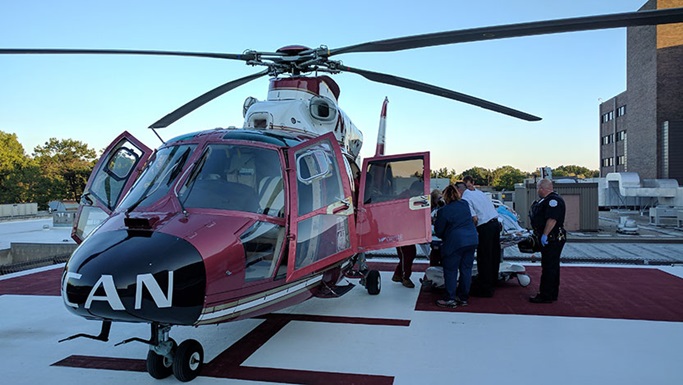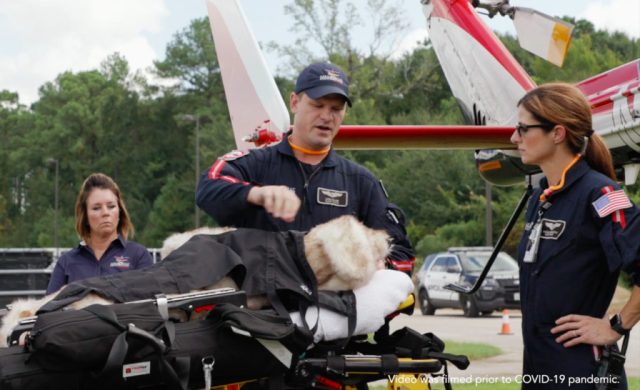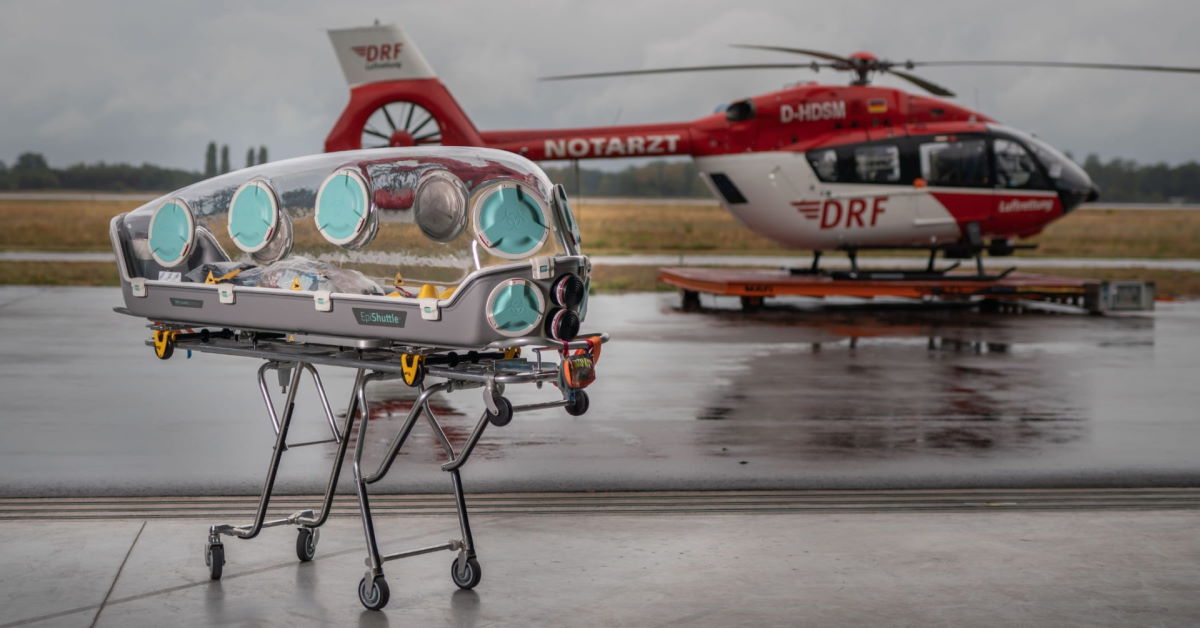Imagine this scenario: a critically ill patient is in need of immediate medical attention that cannot be provided at their current location. In situations like these, time is of the essence, and that’s where ECMO transport comes in. ECMO, which stands for extracorporeal membrane oxygenation, is a life support technique that takes over the function of the heart and lungs, allowing the patient to be transported safely to a specialized medical facility. In this article, we will explore the incredible capabilities of ECMO transport and how it has revolutionized the field of air ambulances. So buckle up and get ready to discover how this life-saving technology is taking life support to new heights – quite literally!
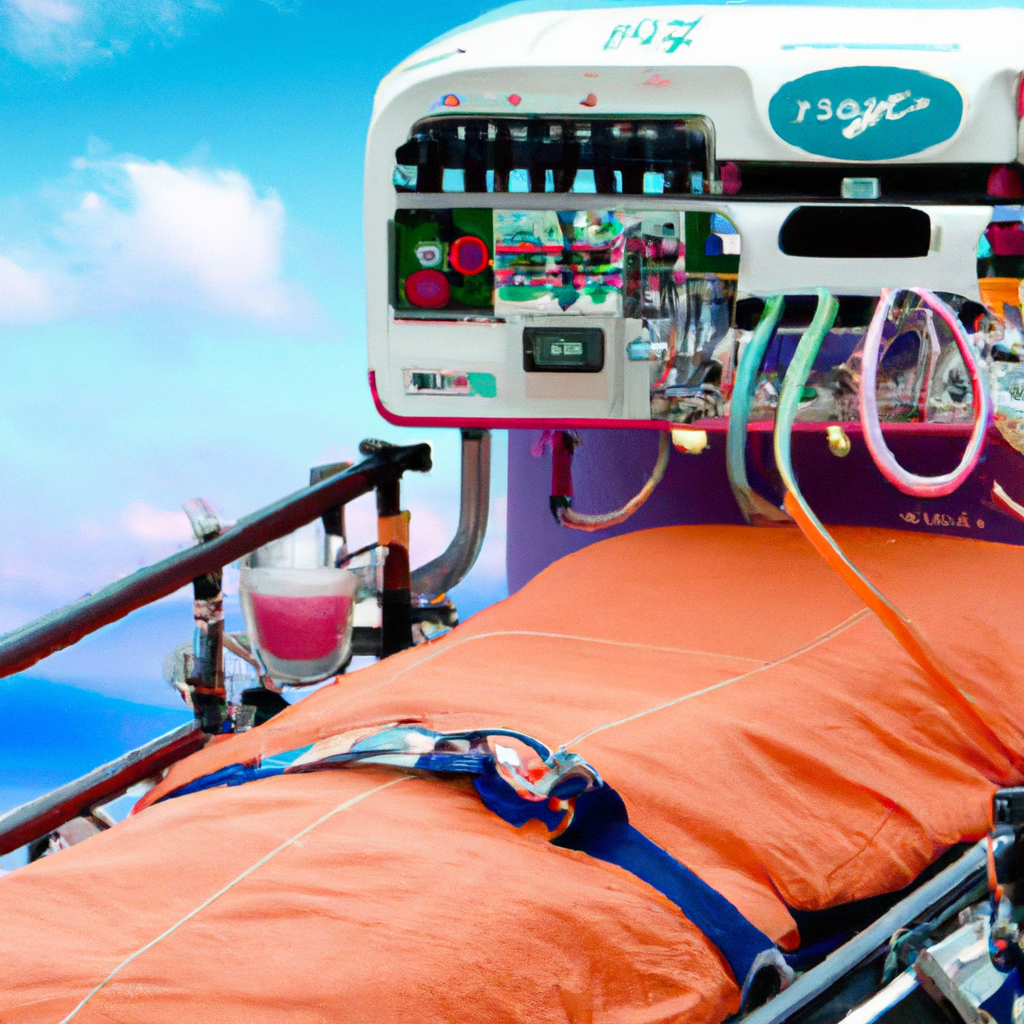
What is ECMO Transport?
Definition and Purpose
ECMO transport, also known as Extracorporeal Membrane Oxygenation transport, is a specialized method of providing life support to critically ill patients during air ambulance transfers. It involves the use of a machine that temporarily takes over the functions of the heart and lungs, allowing for the oxygenation of blood and removal of carbon dioxide. The primary purpose of ECMO transport is to provide critical care to patients with severe respiratory or cardiac failure who require advanced support during transportation to a specialized medical facility.
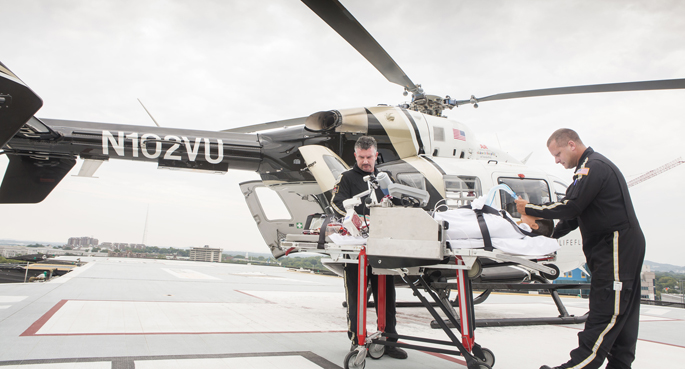
How ECMO Works
ECMO works by removing deoxygenated blood from the patient’s body through cannulas, which are tubes inserted into major blood vessels. The blood is then filtered through an artificial lung, known as an oxygenator, which removes carbon dioxide and adds oxygen. The oxygenated blood is then pumped back into the patient’s body, bypassing the heart and lungs. This continuous cycle ensures that the patient’s blood is adequately oxygenated and carbon dioxide levels are regulated. ECMO can be used for both respiratory and cardiac support, depending on the patient’s specific needs.
When is ECMO Transport Necessary?
Severe Respiratory Failure
ECMO transport is often necessary when a patient experiences severe respiratory failure and conventional methods of ventilation are inadequate. This can occur due to conditions such as acute respiratory distress syndrome (ARDS), pneumonia, or severe asthma. ECMO provides a temporary solution by augmenting the patient’s lung function and oxygenation levels, allowing for stabilization and transportation to a medical facility equipped to provide specialized care.
Cardiac Failure
In some cases, ECMO transport is required for patients experiencing cardiac failure or cardiogenic shock. This occurs when the heart is unable to pump enough blood to meet the body’s needs. ECMO can provide temporary circulatory support by assisting the heart’s pumping function, allowing for stabilization and transport to a facility where further interventions, such as cardiac surgery or transplantation, can be performed.
Life-Threatening Lung or Heart Conditions
ECMO transport is also necessary for patients with life-threatening lung or heart conditions that require immediate intervention. This can include conditions such as pulmonary embolism, severe pulmonary hypertension, or heart failure. ECMO allows for the rapid stabilization and transportation of these patients to specialized medical centers where definitive treatment can be administered.
The Role of ECMO in Air Ambulance Services
Advantages of ECMO Transport
ECMO transport offers several advantages in the realm of air ambulance services. Firstly, it provides a means of life support for critically ill patients who require specialized care during transportation. The ability to provide advanced respiratory and cardiac support in-flight increases the chances of survival and improves patient outcomes. Additionally, ECMO transport allows for the rapid transfer of patients to specialized medical centers, ensuring that they receive the necessary interventions in a timely manner.
Challenges of ECMO Transport
While ECMO transport offers numerous benefits, there are also challenges associated with its implementation in air ambulance services. One significant challenge is the requirement for specialized equipment and trained personnel to operate and monitor the ECMO machine during transport. ECMO transport also necessitates careful logistical planning, including ensuring that the appropriate resources and expertise are available at both the departure and destination facilities. Additionally, the high costs associated with ECMO can pose a challenge, as it may not be feasible for all patients or healthcare systems.
Essential Components of ECMO Transport
ECMO Machine
The ECMO machine is the central component of ECMO transport. It consists of various components, including a pump, oxygenator, and heat exchanger. The pump is responsible for circulating the blood through the oxygenator, which adds oxygen and removes carbon dioxide, while the heat exchanger helps control the temperature of the blood during the process.
Cannulas
Cannulas are essential for ECMO transport as they allow for the connection of the patient’s vasculature to the ECMO circuit. These tubes are inserted into major blood vessels, such as the jugular vein or femoral artery, and are crucial for the continuous flow of blood between the patient and the ECMO machine.
Heat Exchanger
A heat exchanger is an integral component of the ECMO machine that helps regulate the patient’s body temperature during transport. It ensures that the blood is warmed or cooled as needed to maintain optimal patient temperature.
Pumps and Oxygenators
The pump and oxygenator are key elements of the ECMO machine responsible for maintaining proper blood flow and oxygenation. The pump propels the blood through the circuit, while the oxygenator adds oxygen and removes carbon dioxide, mimicking the function of the lungs.
Monitoring Equipment
Monitoring equipment is essential during ECMO transport, as it allows for the continuous assessment of the patient’s vital signs and oxygenation levels. This includes devices such as pulse oximeters, blood pressure monitors, and continuous cardiac monitoring systems.
ECMO Team and Specialized Training
Composition of the ECMO Team
An ECMO transport team typically consists of a multidisciplinary group of healthcare professionals with specialized training in ECMO management. This team often includes critical care physicians, cardiothoracic surgeons, perfusionists, respiratory therapists, nurses, and ECMO specialists. Each member plays a vital role in the successful implementation and monitoring of ECMO during transport.
Required Training and Expertise
ECMO transport requires extensive training and expertise due to its complexity and potential risks. The team members undergo specialized training in ECMO management, including cannulation techniques, troubleshooting common issues, and management of complications. Regular performance of simulation exercises and maintenance of up-to-date knowledge and skills are crucial to ensure safe and effective ECMO transport.
Preparing for ECMO Transport
Patient Evaluation and Selection
Before initiating ECMO transport, a thorough evaluation of the patient is conducted to determine the appropriateness and feasibility of this intervention. Factors such as the severity of the patient’s condition, their response to prior therapies, and the availability of specialized care at the destination facility influence the decision for ECMO transport. Expert clinicians carefully consider the potential risks and benefits for each individual patient before proceeding with ECMO.
Logistics and Planning
Logistics and planning are critical components of ECMO transport to ensure the smooth and safe transfer of the patient. This includes coordination with the referring and receiving facilities, ensuring the availability of ECMO equipment, and coordinating ground and air transportation logistics. Medical teams must also be prepared for potential contingencies during transport, such as adverse weather conditions or the need for in-flight interventions.
Conducting ECMO Transport
Pre-flight Preparation
Before initiating the actual transport, the ECMO team performs a comprehensive pre-flight checklist. This includes verifying the functionality of all ECMO equipment, ensuring appropriate cannulation and connection to the patient, and confirming proper blood flow and oxygenation. The patient’s vital signs and overall stability are closely monitored during this phase to ensure readiness for transport.
Flight Considerations
During the flight, the ECMO team closely monitors the patient’s condition and adjusts the ECMO settings as needed. Factors such as altitude, cabin pressure, and vibration can affect the functioning of the ECMO system, so continuous monitoring and optimization are essential. Additionally, the team ensures the safe and secure placement of all equipment to minimize the risk of dislodgement or damage during flight.
In-flight Patient Monitoring and Care
Throughout the flight, the ECMO team provides continuous monitoring and care to the patient, addressing any acute changes or complications that may arise. This includes maintenance of hemodynamic stability, management of oxygenation and ventilation, and administration of medications as required. The ECMO team works seamlessly to ensure the patient’s safety and well-being throughout the entire transport process.
Safety Measures and Potential Risks
Safety Checks and Protocols
Patient safety is of utmost importance during ECMO transport, and stringent safety checks and protocols are followed. These include rigorous verification of equipment functionality, meticulous monitoring of vital signs, and adherence to infection control measures. The ECMO team implements safety protocols to mitigate the risks associated with cannulation, circuit integrity, and potential complications during transport.
Managing Complications and Adverse Events
Despite meticulous planning and precautions, complications and adverse events can occur during ECMO transport. The ECMO team is trained to promptly identify and manage these complications, including bleeding, clotting, circuit malfunction, or hemodynamic instability. Emergency equipment, medications, and procedures are readily available to address these situations and ensure the optimal outcome for the patient.
Success Stories and Case Studies
Real-life Examples
Numerous success stories highlight the life-saving potential and effectiveness of ECMO transport. Patients with severe respiratory or cardiac failure have been successfully transported to specialized centers using ECMO, where they have received the necessary interventions and achieved positive outcomes. These real-life examples illustrate how ECMO transport can bridge the gap between critical care and definitive treatment, giving patients a chance for survival and recovery.
Metrics and Outcomes
The success of ECMO transport can be measured using various metrics, including survival rates, length of hospital stay, and patient functional outcomes. Studies have shown that ECMO transport can significantly improve survival rates for patients with severe respiratory or cardiac failure. Additionally, ECMO transport has been associated with better long-term outcomes and improved quality of life for patients who undergo this intervention.
Future Directions and Innovations in ECMO Transport
Research and Advancements
Ongoing research and technological advancements continue to improve the field of ECMO transport. Efforts are focused on developing more compact and user-friendly ECMO machines, refining cannulation techniques, and optimizing patient selection criteria. Additionally, research is being conducted to explore new applications for ECMO, such as its potential use in trauma patients or in the transport of patients with other organ failures.
Implications for Air Ambulance Services
The future of ECMO transport holds immense potential for air ambulance services. As technology advances and expertise in ECMO management continues to grow, the availability of ECMO transport may increase, providing more critically ill patients with a lifeline to specialized care. The ability to provide advanced life support in-flight will further enhance the capabilities of air ambulance services, improving patient outcomes and expanding the scope of medical interventions that can be safely conducted during transport.
In conclusion, ECMO transport plays a crucial role in providing life support to critically ill patients during air ambulance transfers. It offers advanced respiratory and cardiac support, allowing for the stabilization and transportation of patients to specialized medical facilities. Through the collaboration of trained ECMO teams, the utilization of specialized equipment, and meticulous planning, ECMO transport has the potential to save lives and improve patient outcomes. With ongoing research and advancements in the field, the future of ECMO transport looks promising, offering even more possibilities for air ambulance services and the patients they serve.
